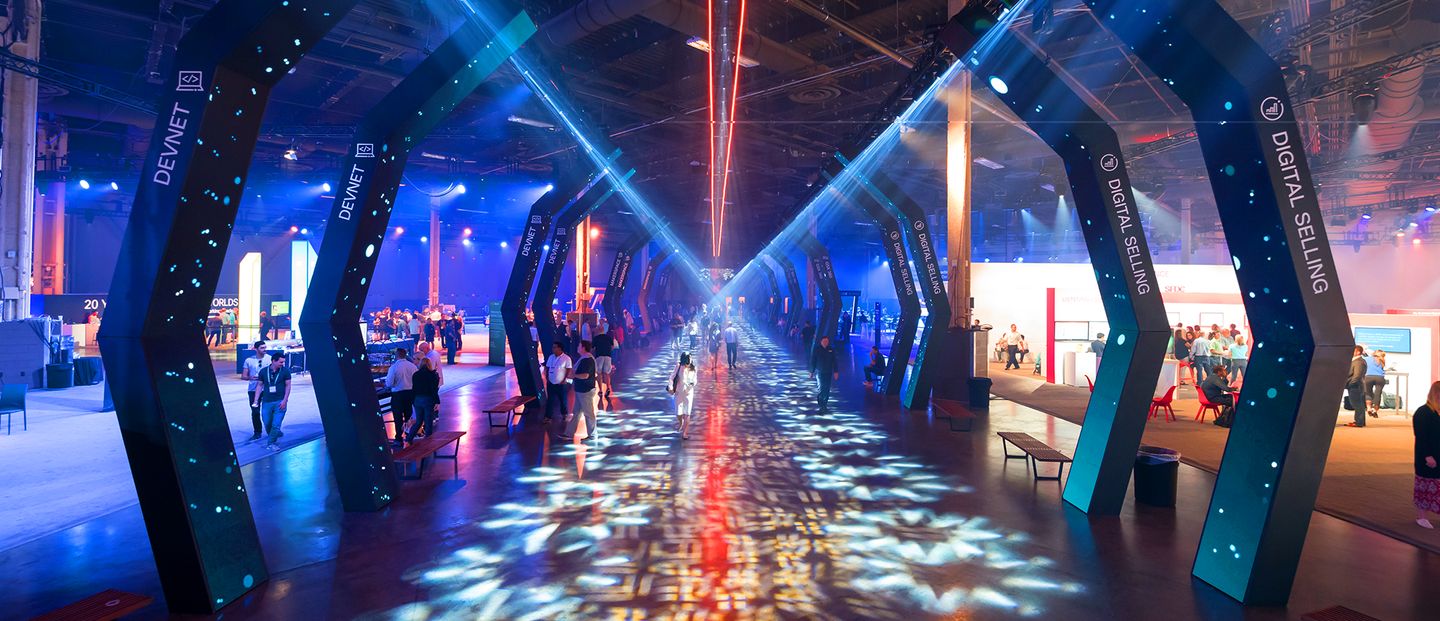
Scott Kellner, VP of Marketing
Scott is vice president of marketing at GPJ, with experience in marketing automation, public relations, advertising, product positioning, lead generation, SEO/SEM, sales management and executive leadership.
Experiential Marketing is the Antidote to Interruptive Messaging
In an era of brand message bombardment, creepy data-driven retargeting and an increasing number of methods for skipping or ignoring the messages, experiential marketing is fast becoming the go-to option for marketers. The hallmark of the technique is no secret: voluntary participation. Consumers self-select by attending or engaging with activations of their own volition, making the interactions more meaningful, while generating data that is more reliable and actionable.
There is ample empirical evidence of this. Several recent studies confirm:
- Budgets for rose 19 consecutive quarters to Q2 2018, and in the Q4 2018 IPA Bellwether report, it was only events that saw any rise in investment at all.
- In-person events are the most effective form of content marketing for B2B marketers. (Content Marketing Institute, 2016)
- 81% use in-person events in their B2B marketing strategy. (Content Marketing Institute, 2016)
- 67% of B2B brand-side marketers expect growth in these budgets in the next 18 months; that growth will be an average of 24% (AgencyEA report, 2019)
- 75% of brand-side marketers say that experiential has been the most successful tactic of their various marketing strategies (AgencyEA report, 2019)
Experiential Marketing Rises to the Forefront
True engagement marketing requires more than just event management expertise. It demands practitioners who understand how to create personalized experiences across an entire activation campaign. Agencies with experience design, content creation, digital engagement and live production expertise are growing fastest because they combine a full suite of services with an understanding of a client’s brand, plus the appreciation of anthropological and psychological elements that create an experience that resonates. Additionally, real time observation of actual participant behavior is key in order to course correct and further personalize each person’s journey at an activation.
Forward thinking brands are aware of all this, and their actions underscore the potency and efficacy of it:
- 92% of brand-side respondents believe integrating experiential within the overall sales and marketing funnel is imperative to their success.
- 75% of B2B brand-side respondents agree that experiential has proven to be the most successful tactic of their brand’s various marketing strategies, a 14% increase from 2018.
- A recent global brand experience study found that a third of CMOs plan to devote 21-50% of their budget to this type of marketing program over the next several years. (Freeman Global Brand Experience Study, 2018)
The Experience IS the Message
To get a deeper understanding of why experiential is growing so fast, let’s look at three key benefits, among many, that CMOs identify as the reason for their investment.
First, most marketing communications tools are fleeting. The duration of their effect is short. Think of out-of-home, digital, TV, radio, print, email, etc. All of them “live” for a brief time in our consciousness, if at all. Event-based programs, on the other hand, provide an opportunity to create a lasting impression, and relationship, with target consumers. When you actually engage in a tangible way with a brand, you form a bond that is both physical and, ideally, emotional. You’ve participated with it, and therefore you remember it and feel a certain kinship with it.
GPJ’s Camp Jeep program is a perfect example of this. Over the course of the 15 years that this program has run, more than 2 million people have participated in this “ride and drive” exhibition at a wide variety of venues. Consumers get to actually experience what makes Jeep special – they can actually feel it! More importantly, Jeep continues to invest in it because the ROI is demonstrable and impressive.
Next, with all if the chatter about data, not enough people are talking about meaningful data. Basing large marketing expenditure decisions solely on digital analytics is risky. However, when digital data is combined with participatory data from events and activations, a much more holistic view of target consumers emerges. Both sources of data can fuel insights into each method’s strategy, as well. Digital data can inform event strategy and event data can have a powerful effect on digital campaigns – accelerating sales cycles and providing better information for future digital outreach.
Finally, CMOs are investing in experiences because 65% of consumers say that live events and demonstrations help them understand a product better than any form of advertising (Event Marketer’s Event Track study). In this case, seeing alone does not equate to believing; seeing, touching and experiencing does.
IBM’s sponsorship and demonstration space at the U.S. Open Tennis Tournament is a great example of this. GPJ helped IBM showcase its Watson artificial intelligence technology in a way that took a very complicated concept (how AI can transform lives, healthcare, entertainment and more) and simplified it in a way that was intuitive and memorable. Participants were both enchanted and excited, and left with a better understanding of the power of AI, while creating yet another “halo” positive brand effect for IBM.
ROI for Events Doesn’t Have to be Complicated – It’s Part of Good Experience Management
Traditionally, the most challenging element of has been to determine the ROI. The attribution element can be tricky – how do you tell which marketing tactic actually resulted in the sale? Marketers have thus relied upon a very simple measurement to determine basic ROI – attendee satisfaction. But what if everyone who is “satisfied” is outside your target market? What if you’re devoting your effort and budget to “reaching” the people who will have the least impact on your sales and bottom line?
That’s where an agency’s strategy personnel are so important. GPJ was the first agency of its kind to create a dedicated strategy practice (way back in the early ‘90s) because we saw the need to arm our clients with the information they needed to justify, and grow, their event budgets. Our detailed approach gives our clients the peace of mind that not only will their event be flawless, they will achieve or exceed their business objectives, and be able to show it. It’s why we keep clients for decades not quarters.
There is no one-size-fits-all approach to event ROI – each client’s program, process and requirements are unique. So we devote senior strategists to our account management teams to ensure that each project is both managed properly and profitable.
What to Look For in an Experiential Agency Partner
Events happen in real-time. There are no “do overs”. It’s not like other disciplines where you can reshoot the commercial, or tweak the digital marketing campaign. Events happen and the show must go on.
Regardless of size or scope, each brand’s event must be flawless – every time. That kind of precision requires expertise across a broad range of specialties, and a track record to prove it. Your agency partner should be able to demonstrate a long history with both the basic and the “sexy” elements of managing events.
Specifically, logistics are an art unto themselves. City permits, security, venue sourcing, fabrication, engineering, food and beverage, event/booth assembly and breakdown, union negotiations, hotels, registration etc. are all a major part of event success, and profitability.
And then there’s strategy, creative direction, content creation, event production, special event coordination, live production, broadcast streaming and many other levels of expertise required for clients. Only a full-service, vertically integrated agency can offer all of that. The alternative is that you have to manage a series of local agency partners, each with their own area of expertise, who may or may not all be on the same page. You end up being a conductor instead of enjoying the music and, often, your event’s look and feel or execution suffers.
Last, you may have global needs for your event program. Finding the right agency means going with one that has a worldwide footprint, not a loose collection of “partner agencies” in various countries, and within which there is very little, if any, coordination or history. All sorts of problems arise when relying on a partner network of this kind, including consistency, accountability and timing. Be wary of this approach. Global agencies often have the buying power to create excellent economies of scale, saving you time and money, as well.
It’s Time to Get Onboard!
Regardless of the market or industry vertical in which you operate, experiential marketing is, or will soon become, a major component of your marketing mix. By its very nature, it overcomes the boundaries put up by consumers to avoid messaging, and it complements your other activities in a way that is both cost-effective and beneficial from an analytics standpoint. The time is now to become a first mover or innovator in your space and to take advantage of what experiential can do for you, and your bottom line. You can start small and evolve to a larger program. Or you can start with a series of tests of different types of activations. Either way, make sure you begin with an agency partner that can meet all of your needs, regardless of where you are in your journey to exploit this powerful marketing tool.
